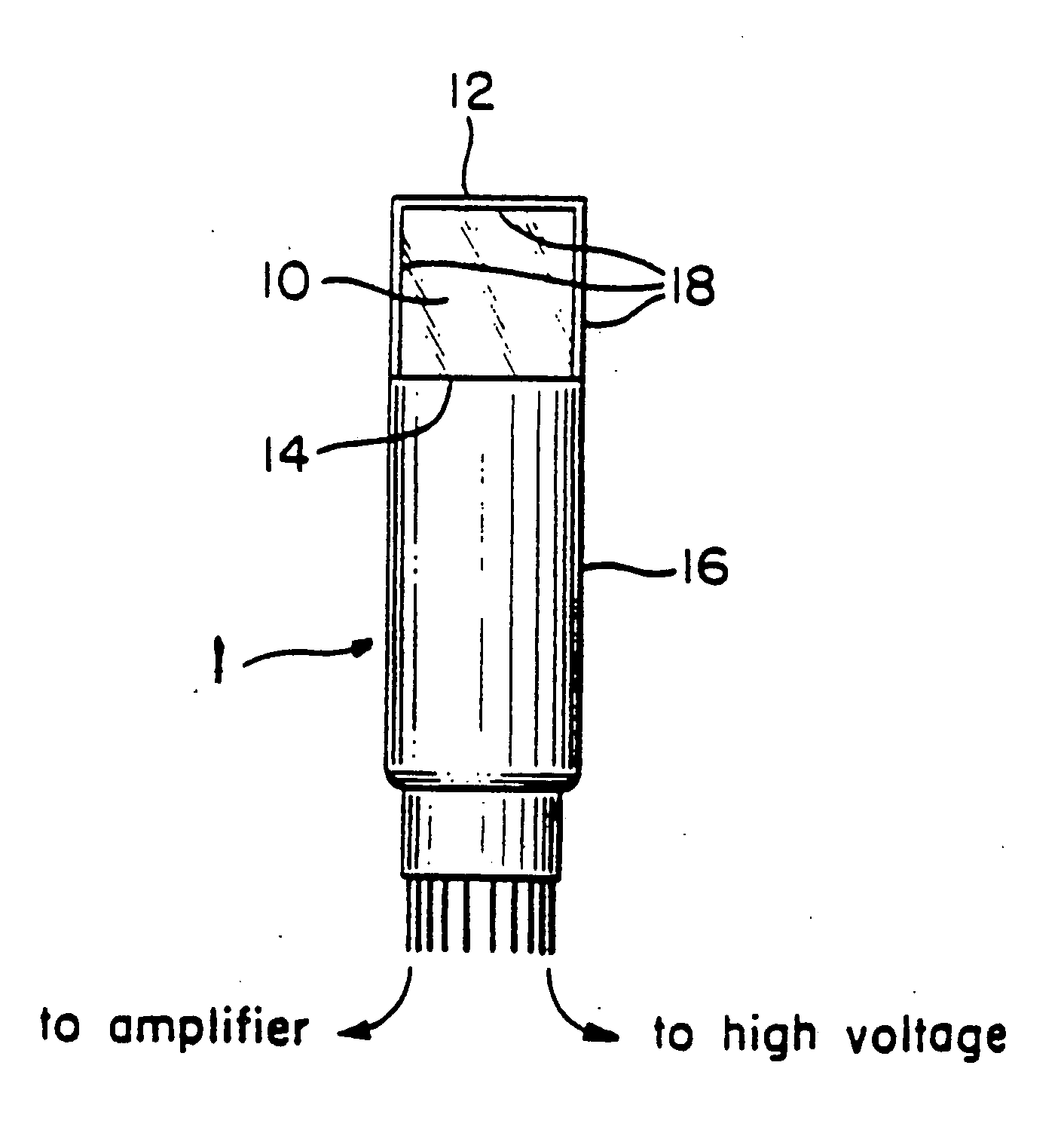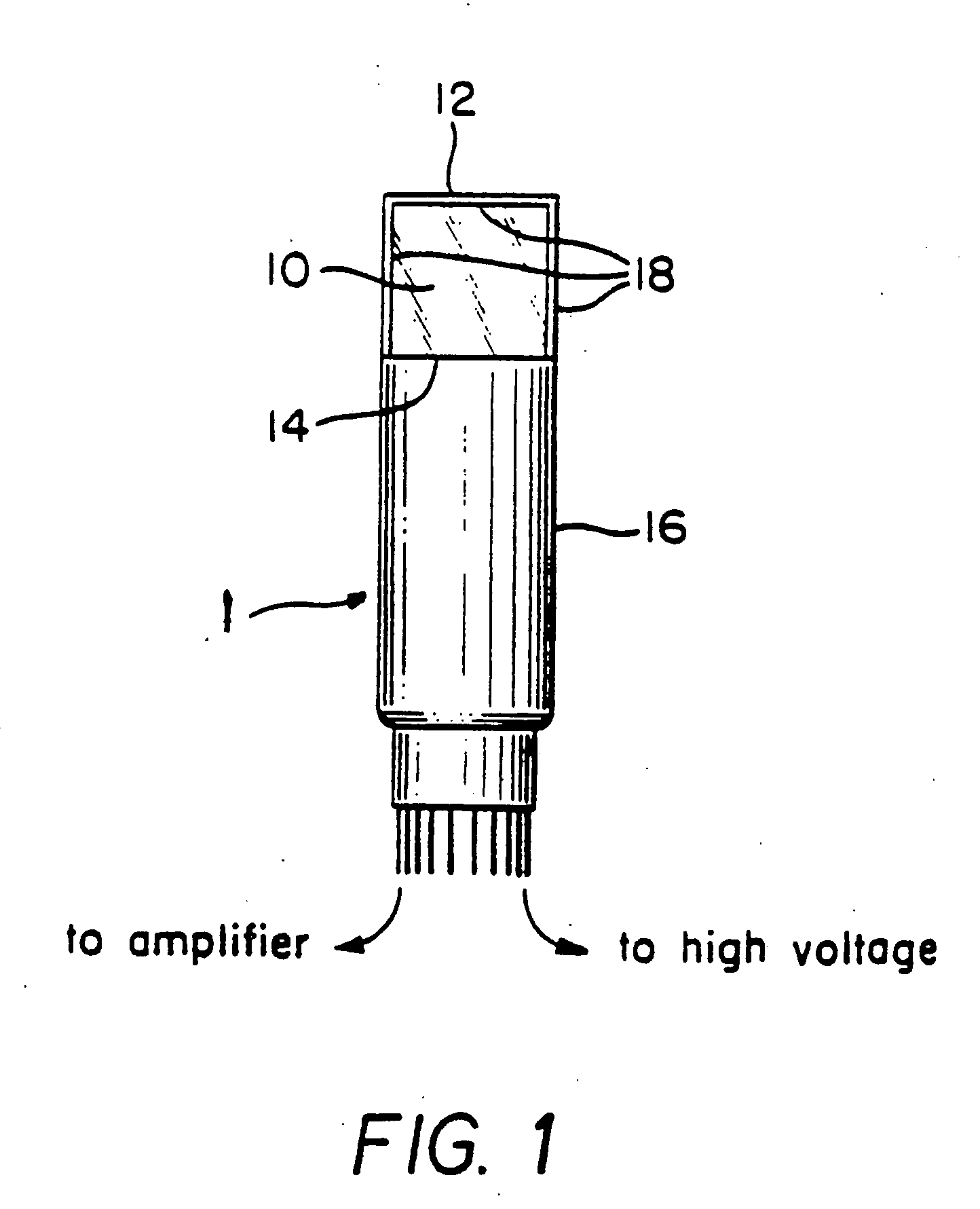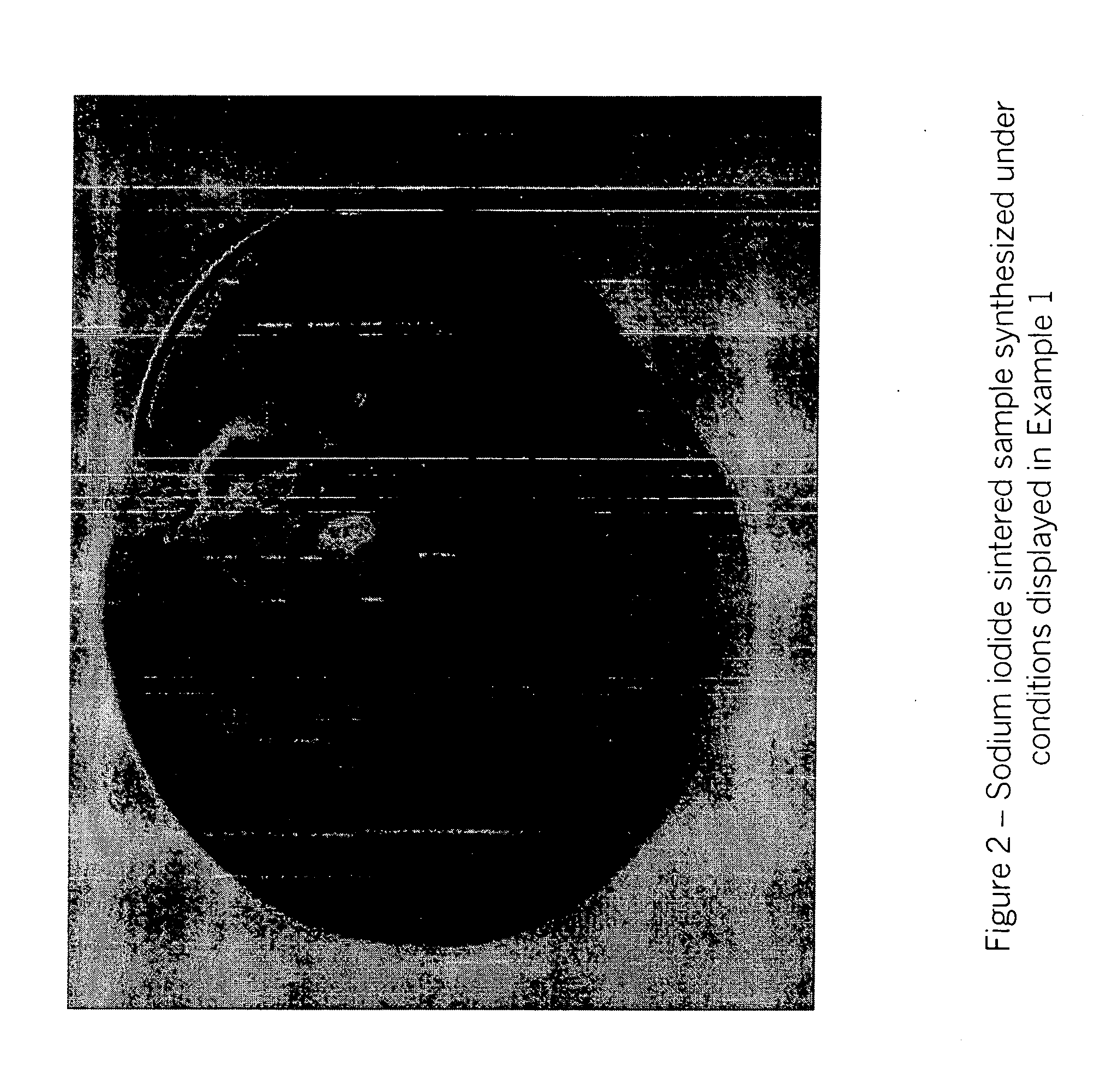Sintered cubic halide scintillator material, and method for making same
a technology of scintillator material and cubic halide, which is applied in the direction of conversion screen, nuclear engineering, non-electric welding apparatus, etc., can solve the problems of insufficient quality of crystals to be used in commercial applications, energy-intensive furnaces, etc., and achieve better yield, reduced scrap, and high throughput
- Summary
- Abstract
- Description
- Claims
- Application Information
AI Technical Summary
Benefits of technology
Problems solved by technology
Method used
Image
Examples
examples 1-5
[0059] In these Examples, samples of 20 grams of sodium iodide powder of 99.999% purity obtained from Sigma Aldrich were pre-treated by drying the powder to remove moisture and any volatile impurities and kept under a dry atmosphere throughout the procedure described below. Particle size distributions of the samples are set forth below in Table 1. The samples contained no thallium. The samples were loaded into the die and hot pressed in a vacuum hot press and sintered under pressure in accordance with the following protocol. The samples initially at ambient temperature were heated at a heating ramp rate of 6.6° C. / minute to a processing first temperature of 300° C. and held at the first temperature for a first residence time as indicated in Table 1. Then the samples were allowed to cool at a cooling ramp rate of 4° C. / minute to a second temperature of 240° C. for annealing and held at the second temperature for a second residence time of 15 minutes. Finally, the samples were allowed...
example 6
[0060] In this example 20 grams of sodium iodide containing 0.2% thallium iodide and having a particle size of from about 10 micrometers to about 592 micrometers were cold pressed at ambient temperature and 110,000 psi for 5 minutes. The resulting scintillator body is shown in FIG. 7 and was translucent yellow.
[0061] These Examples show that for sintered specimens using particles collected between −60+70 Sieves, and processing conditions described in Example 1, the samples were transparent and yellow instead of the transparent pure white appearance characteristic of pure sodium iodide.
[0062] Comparing Examples 2 and 3 (i.e., similar particle size distribution, pressure and residence temperature), it can be seen that there was a significant improvement in optical clarity by reducing the residence time from 60 minutes, wherein the samples were translucent pure white, to 22 minutes, wherein the samples were transparent pure white.
[0063] Comparing Examples 4 and 5, synthesized under ...
PUM
| Property | Measurement | Unit |
|---|---|---|
| size | aaaaa | aaaaa |
| pressure | aaaaa | aaaaa |
| particle size | aaaaa | aaaaa |
Abstract
Description
Claims
Application Information
 Login to View More
Login to View More - R&D
- Intellectual Property
- Life Sciences
- Materials
- Tech Scout
- Unparalleled Data Quality
- Higher Quality Content
- 60% Fewer Hallucinations
Browse by: Latest US Patents, China's latest patents, Technical Efficacy Thesaurus, Application Domain, Technology Topic, Popular Technical Reports.
© 2025 PatSnap. All rights reserved.Legal|Privacy policy|Modern Slavery Act Transparency Statement|Sitemap|About US| Contact US: help@patsnap.com



